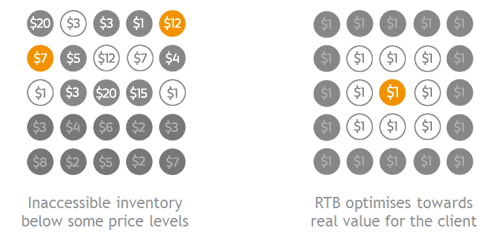Last month I looked at the difference between online and mobile advertising, and how it really boiled down to two critical issues: cookies (or lack thereof in mobile), and fragmentation of the mobile ecosystem across devices, platforms, manufacturers and so on.
This was just one part of a superset of issues that I characterised as ‘Crimes against mobile advertising’ in a session I presented at the Mobile World Congress in Barcelona last week.
The premise: every day at Adfonic we are witness to crimes. Nobody dies, and no blood is spilt, but there is a crime scene with tell-tale signs of what went wrong. Treating mobile like online is just one crime. The other three most heinous crimes are: employing too few formats with too many messages; buying cheap; and fixating on premium when mobile is intensely personal.
The good news is that there is a get out of jail card – and I’ll even tell you how to get one.
Crime: Treated mobile like digital
This is the most serious crime. Mobile and online are only superficially similar. Look below the surface and you’ll see that they really are quite different beasts. In fact this is such a serious crime that my entire previous article was about it, so read ’Why you can’t do mobile advertising like online’, here on Fourth Source, from last month to find out more.
Crime: Used many messages, few creatives
As well as being fragmented, mobile encompasses a huge diversity of screen sizes, from the smallest feature phone to the largest tablet. To cater for these sizes, it’s essential that mobile advertisers produce as many creatives as possible, so that they work in as many scenarios as possible.
This is why, when taking brands and agencies through the mobile ad process, our sales team often advises that more creatives are better because they will work across more ad units.
Meanwhile, we often find that clients try too hard with their creatives, shoehorning in as much as possible into a limited screen area. Here, our advice is to keep it simple. Put across one message across the entire campaign, even if it’s expressed differently in different scenarios. You get much more value if you hit this nail with one big hammer. This is just good communications no matter what the medium.
Remember: one message, many creatives. If you get this one the wrong way around, it’s a crime.
Crime: Bought cheap
You might hear talk of mobile inventory being ‘cheap’ (although recent surveys such as those from Cowen and Company indicate that mobile inventory prices could soon approach online). Whether or not mobile and online ever achieve parity, a significant proportion of global inventory will only ever be accessible above a certain price point.
If you’re an agency that insists on the cheapest rate, we simply cannot buy the inventory that will yield good results. And by ‘good’ inventory, we mean the right sites, targeting the right people at the right price for your campaign objectives.
This is where Real-time Bidding (RTB) comes in. RTB is programmatic buying which enables us to bid for only the impressions that drive your goals as a client. Through RTB, you know where you are trading and how much you are bidding, and this transparency means you can exercise control, optimising towards the most valuable audiences for you, through algorithms that tell you what is working, in real-time. As the diagram below shows, the cost is the same but the value to you is higher.

So the key here really is the concept of value, to you as a client. If you don’t get as much value as possible, it’s a crime. Which leads me to…
Crime: Fixated on premium
We’ve just seen how ‘cheap’ is rarely ‘best’. The opposite is also true, in that premium may not necessarily be the best for you. For example, an ad slot on the Guardian’s mobile app could be considered premium, but not if you want to reach Telegraph readers.
RTB has already shown us that, by bringing a huge amount of data to bear at the per-impression level as to whether to bid, and if so, how much, it can find value no matter where it resides – and this may not be the premium sites or apps.
So to avoid committing this crime, prepare to have your preconceptions challenged. Look at how your campaigns are really working in real time and optimise as you go. It could be that the inventory you thought would be most effective is outperformed by less costly inventory that is in fact of more value to you and your campaign.
Get out of jail card: Big data and smart algorithms
If you’ve committed any of these crimes, there’s a way out – or, at least, to avoid committing them in future.
Success in mobile advertising today is about making data work hard for you. By diving deep, picking up insights and coming back for air, you really can see what works and avoid being fixated on premium. You can develop algorithms that optimise towards your goals. You can bid at the right price through programmatic buying. And ultimately, big data could be the ‘bridge’ to join the screens, as data-driven approaches figure out ways around identification of devices without invading people’s privacy.
So if you do one thing this year, hire a data scientist. The carrot is that she will help you unlock the huge amount of value residing in your data, to benefit you and your clients. And the stick? She could just keep you from committing crimes against mobile advertising with malice aforethought.





